The Best Science Books
Science and Storytelling

Whether you're interested in space travel, the inner workings of the universe, the mind of a brilliant mathematician or human behavior and the dark life of a patient who underwent a lobotomy, Live Science probably has a book for you here. Our writers scanned our archives for our favorite science books, those in which the storytelling is as compelling as the science and history itself, so you don't have to sift through Amazon picks or stocked bookshelves.
Packing for Mars (Mary Roach)
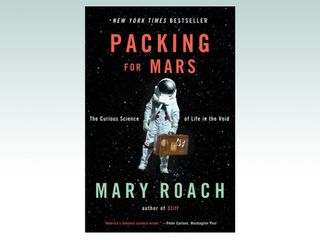
Mary Roach is the author of a series of one-word-titled books that look at the stranger side of science. "Packing for Mars," published in 2011, breaks the title trend, but not the theme. This is a book about the nitty-gritty of travel among the stars. Is the food disgusting? Where do you go to the bathroom? Have you ever thought of how many skin flakes you wash down the shower drain each morning and where those dead cells would go if you were floating around, unbathed, in zero gravity? Roach digs deep into the NASA archives and brings to light all the basic biological minutiae that haunted the dreams of the space program's pioneers. In the process, she elucidates the quirkier challenges of getting humans to the eponymous Red Planet. Hopefully Elon Musk has been reading along.
The Big Burn: Teddy Roosevelt and the Fire that Saved America (Timothy Egan)
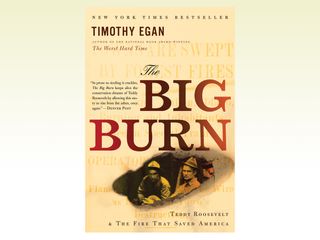
In 1910, an enormous wildfire immolated 3 million acres of Washington, Idaho and Montana, killing 87 people. This conflagration turns out to be the fulcrum upon which former President Teddy Roosevelt's dreams of conservation turned. Timothy Egan tells the story of Roosevelt and his forestry chief Gifford Pinchot and their efforts to wrangle Western lands into public hands. Half history, half science, this book is anything but dry. Egan picks through the letters and written reminiscences of survivors to describe vividly what it was like to face down the largest wildfire by area in U.S. history. Roosevelt's larger-than-life personality (and tendency to challenge houseguests to wrestling matches) provides plenty of jaw-dropping "wait, he did what?" moments. More urgently, this book is an important primer for anyone trying to understand today's battles over public lands in the West.
Related: The science websites that we read every day
The Demon-Haunted World (Carl Sagan)
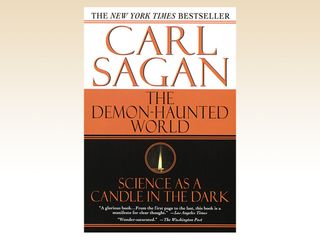
While neither as poetic as "Pale Blue Dot" nor as comprehensive as "Cosmos," "The Demon-Haunted World" remains one of Carl Sagan's most compelling books. In it, Sagan explains how to use the scientific method in everyday life, as well as how to protect yourself from charlatanism and expose pseudoscience. The Demon-Haunted World is partly a paean to rational, skeptical thinking, but it also tackles some topical issues, such as how politics can twist science to its own ends, and how conspiracy theories can poison an otherwise reasonable mind. One essay in the book, "The Dragon In My Garage," is possibly the best argument for religious agnosticism ever put on paper. — Marshall Honorof, Live Science Contributor
Newton and the Counterfeiter (Thomas Levenson)
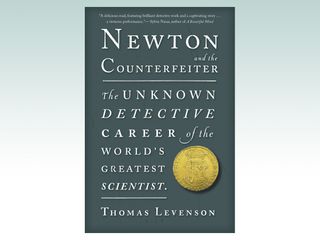
Most know the story of Sir Isaac Newton: scientist, mathematician and sworn enemy of apple trees everywhere. What fewer people know is the story of Sir Isaac Newton: detective for the British government. In 1699, Newton became the Master of the Mint, and matched his considerable wits against William Chaloner, a charismatic and inventive criminal mastermind. Chaloner was one of the most prolific coin counterfeiters of the 18th century, and the scale of his plan was large enough to kneecap the entire British Empire. Thomas Levenson's "Newton and the Counterfeiter" (Houghton Mifflin Harcourt, 2009) is not only a thrilling true crime account, but also a fascinating history of economics, coinage and currency. — Marshall Honoroff, Live Science Contributor
The Immortal Life of Henrietta Lacks (Rebecca Skloot)
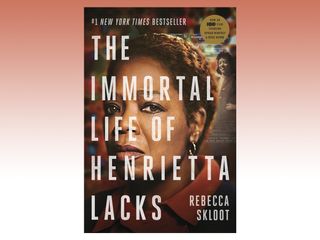
In her book, science writer Rebecca Skloot brings to life not only a tale of some of the most important cells in medicine, but also the life of the owner of those cells, Henrietta Lacks, an African-American tobacco farmer born in Roanoke, Virginia, in 1920. Lacks was diagnosed with cervical cancer in 1951; cells taken from one of her tumors astonished scientists when they reproduced indefinitely in a lab dish, according to "The Immortal Life of Henrietta Lacks" (Crown Publishing Group, 2010). No other cells were known to do this. Now called HeLa cells after Lacks, the cells have been instrumental in biomedical research and discovery — unbeknownst to her children and others who mourned her death. In a New York Times book review, Lisa Margonelli writes, "Skloot narrates the science lucidly, tracks the racial politics of medicine thoughtfully and tells the Lacks family’s often painful history with grace. She also confronts the spookiness of the cells themselves, intrepidly crossing into the spiritual plane on which the family has come to understand their mother’s continued presence in the world." [Read a Q&A with author Rebecca Skloot]
The Spirit Catches You and You Fall Down (Anne Fadiman)
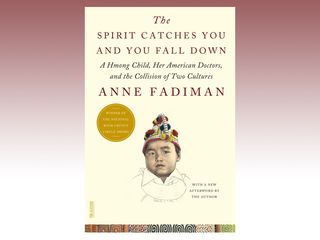
At the surface, "The Spirit Catches You and You Fall Down" (Farrar, Straus and Giroux, 2012) is about a young girl with a severe form of epilepsy whose parents and doctors have conflicting ideas on how to treat her. But it's also the story of a Hmong refugee family from Laos and their attempt to navigate an American medical system that they neither understand nor trust. Referred to by some as an example of "medical anthropology," the book explores how illness is treated in the United States and makes a solid case that greater empathy is needed on both sides of the doctor-patient relationship.
The Emperor of All Maladies (Siddhartha Mukherjee)
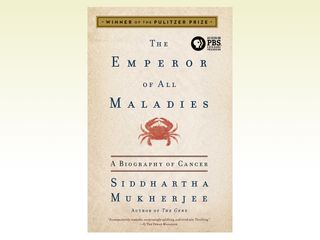
This is an important piece of work about one of the most horrific and pervasive diseases of our time. Don't be turned off by the "heavy" subject matter — Siddhartha Mukherjee does an incredible job of weaving science with storytelling. The book is extremely well researched, the stories are beautifully conveyed and Mukherjee is a masterful writer. I found myself talking about this book constantly to friends and family as I was reading it — a sign of its true impact. Put down your phone, shut off Netflix and read this "biography" of cancer instead. It's well worth your time. — Denise Chow, Live Science Contributor
Parasite Rex (Carl Zimmer)
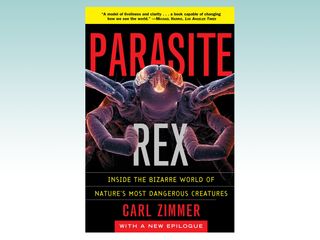
In general, the associations conjured by the word "parasite" are neither good nor pretty. Parasites attach themselves to a host for their own benefit, sometimes with deadly consequences, and typically offer nothing useful in return. But the ways in which parasites evolved to survive off plants and animals — and the highly specialized mechanisms and behaviors that allow them to do so — make for compelling reading, as Carl Zimmer demonstrates in "Parasite Rex" (Atria Books, 2001). Yes, parasites can be terrible, as the book name implies. Certain parasitic isopods eat fishes' tongues and then take up residence in their mouths as living replacements, and many wasp species use caterpillars as living incubators for their growing young, to name just a couple of grisly examples. But the book's often gruesome subjects serve to highlight the beauty of evolution, and Zimmer spins a captivating portrait of survival that highlights the uniqueness of parasitic creatures. — Mindy Weisberger, Live Science Senior Writer
I Contain Multitudes (Ed Yong)
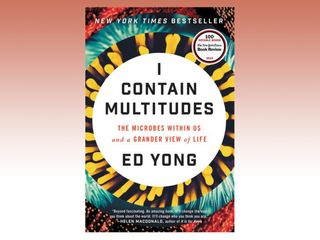
Many people like to imagine that humans are Earth's dominant species. But in reality, all the world's inhabitants — including humans — are shaped by their coexistence with trillions of microscopic organisms, which occupy every surface of their bodies. Ed Yong delves into these complex partnerships in "I Contain Multitudes" (Ecco, 2016), exploring the fascinating and frequently bizarre world of microbes, and the alliances that they share with every animal species on Earth. Yong reveals how scientists are just beginning to discover the many ways that microbes alter the creatures they inhabit — and vice versa. And as researchers delve deeper into the evolution and genetics of microbial life, they uncover the long-established importance of microbes to our bodily functions and everyday health, and how interactions with microbes affect our vulnerability to disease and can even impact our behavior. — Mindy Weisberger, Live Science Senior Writer
Lab Girl (Hope Jahren)
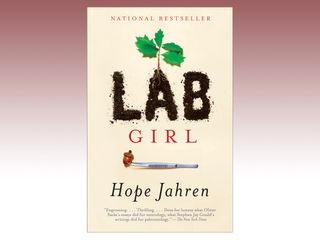
Hope Jahren is a geobiologist — a scientist who works with plants and soil. She is also a gifted storyteller, with an ear for the rhythms of language and an appreciation for the beauty of the green and growing world around us. That combination makes her memoir "Lab Girl" (Knopf, 2016) a uniquely compelling and stirring read, one that probes deeply into her own struggles and challenges as a scientist, and explores the relationships she nurtures along the way, despite her single-minded focus on her work.
Readers who are unfamiliar with the minutia of plant biology will be surprised to learn just how fraught with drama it can be. The odds are against most trees surviving at all, Jahren writes — of the millions of seeds that they disperse, only 5 percent develop as seedlings, and of those, a mere 5 percent live past their first year. And humans can be similarly vulnerable — until we find the people who nourish and complete us, who stand by us as we move through life, and who complement and support us as we change and grow. Hers is a fascinating story, and you will never look at a plant in the same way again. — Mindy Weisberger, Live Science Senior Writer
Sign up for the Live Science daily newsletter now
Get the world’s most fascinating discoveries delivered straight to your inbox.
